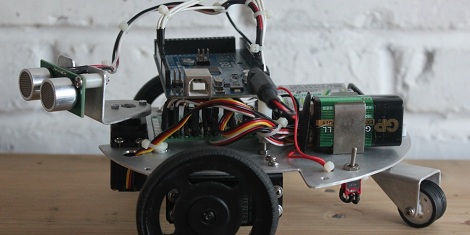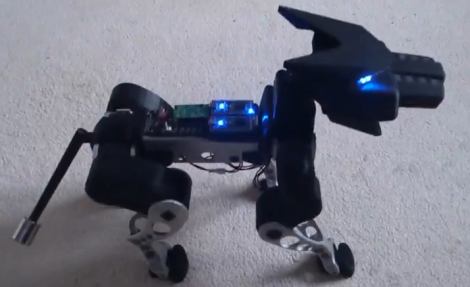
For [Ern]’s MEng group project, his group had to develop a robotics platform capable of achieving some end goal. Because innovation is a large part of the grade, [Ern] convinced his team members to work with a brain controlled interface and build a mind controlled robotics platform.
For wont of having an easy build, [Ern] and his team chose a Lynxmotion Tri-Track robot capable of moving around the classroom while receiving commands from a computer. The mind-control portion of the build comes from a NeuroSky MindWave Mobile, a cheap and fairly open EEG system that reads alpha, beta, and delta waves generated by a user’s brain and sends that data over to a computer for processing.
After a bit of testing that included an Arduino to move the robot forward if the MindWave’s ‘attention’ value was over 60%, [Ern] and his team looked for a way to implement multi-directional control.
In order to get the robot moving left, right, and backwards in addition to moving forwards, the team looked at the included ‘blink detection’ abilities of the MindWave to cycle through a few commands. This technique turned out to be far too sensitive – the blink detection of the MindWave is simply too good. To get around that problem, the team used the signal strength of the received EEG signals. The theory being when a user blinks their eyes, the EEG contacts will move slightly, degrading the signal received by the hardware.
The team finally got a reasonable mind-controlled robot up and working, as demonstrated in the video after the break. Check out how each blink allows [Ern] and his colleagues to cycle through driving modes. Pretty neat for controlling something with your mind.















